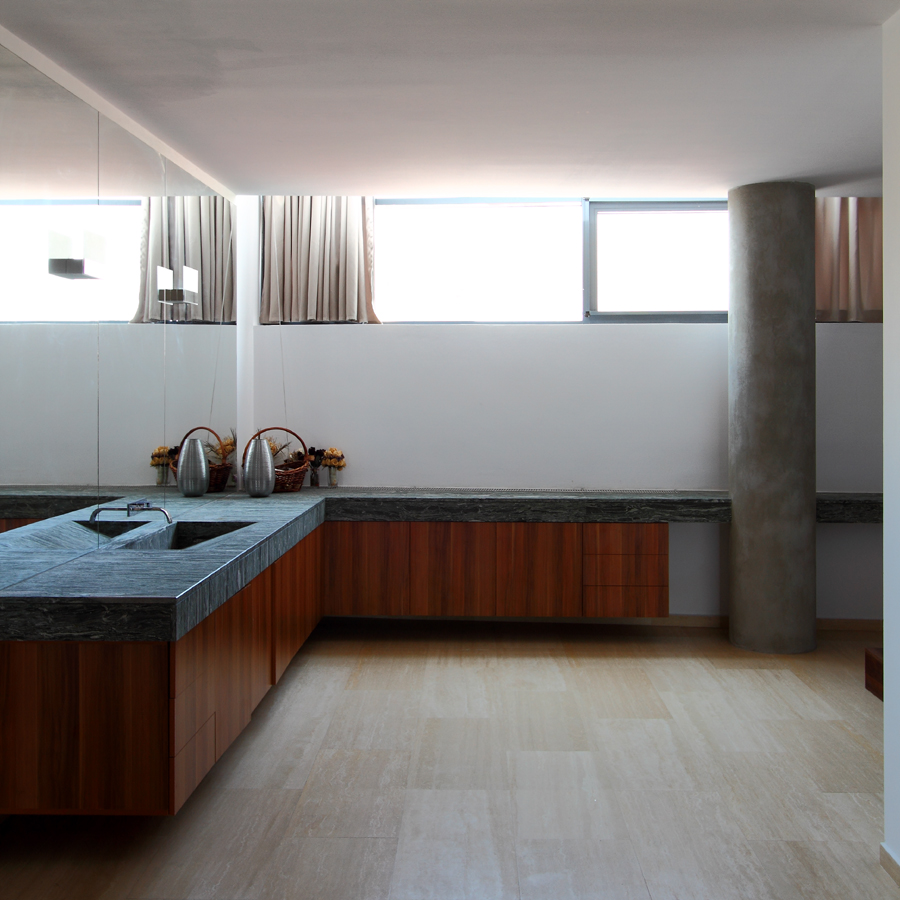
C House
View project description2006Residential C House
2006 / Residential / C House
Location: Bucharest, Romania
Project Status: Built
Architecture: E+EA – Mihai Ene, Adela Ene, Stefan Cristescu
Structure: Profesional Construct – Paul Ioan
Client: Valentin Constantinof
Surface: 533 sqm
Period: 2006 – 2011
Photographs: Radu Malasincu
The intervention on a site in an old Bucharest neighborhood was an opportunity that we hoped for and which was offered to us in 2006 in the form of a single family house on Vasile Lascăr Street.
The plot, with a street with of about 10 m, with the Northern and Eastern blank walls and an unbuilt site to the South, is located in a part of the street that still preserves houses dating from the beginning of the last century, increasingly assaulted by the poor quality architecture of the last 20 years.
The design brief we faced implied the realization of a home for a young family, formed at that time by three members. It was clearly defined from the beginning of the process together with the client, establishing some crucial aspects: almost total intimacy in relation to the street, maximum transparency to the private yard and an extremely fluid interior space.
Our answer to this set of requirements materialized in a house four level house, placed on the street alignment, which takes advantage of the entire width of the lot and develops between its two boundaries.
The section, rather than the plan, is the instrument that defines the space here. A 3-meter wide gangway makes the connection between the street and the backyard behind the lot, protects the entrance and at the same time provides two covered parking spaces. The introduction of this element allowed the definition of a complex interior space, which up to the second floor develops at half level; As far as the connection between the basement, the reception hall, the living room and the kitchen is concerned, it is done through a half ramp.
The sought-after functional ambiguity, especially of the partial basement and ground floor areas, as well as the relatively large areas, were welcomed when, for a short period, the house functioned as a combination of office and dwelling.
The street façade has two openings, each trying differently to ensure the privacy required by the design brief: at the level of the 1st floor, a very narrow window has a pronounced rim, which makes it very difficult to see the inner space from the street; on the 2nd floor, the window that corresponds to the matrimonial bath has, despite its generous size, a 2 m parapet. The facade opposite the street is fully glazed at the ground floor, ensuring the total visual interior / exterior link.
From a structural point of view, the intention was to free the inner space, almost completely, by placing the vertical support elements – T-shaped posts – on the lateral sides of the site. This was a structural effort that implied a special attention to the floor slabs, opting for solving them in a coffered system.
The materials used are those belonging to the old neighbourhood – grey stucco (omnipresent in Bucharest), prepainted metal sheet for roofing, but also surfaces covered with wood and expanded metal mesh for the entrance gate.
The project convinced us once again of the complexity of the insertion issues in traditional urban sites, our secret desire being a connection, with contemporary means, to the experience of interwar architecture, typical to the site.














